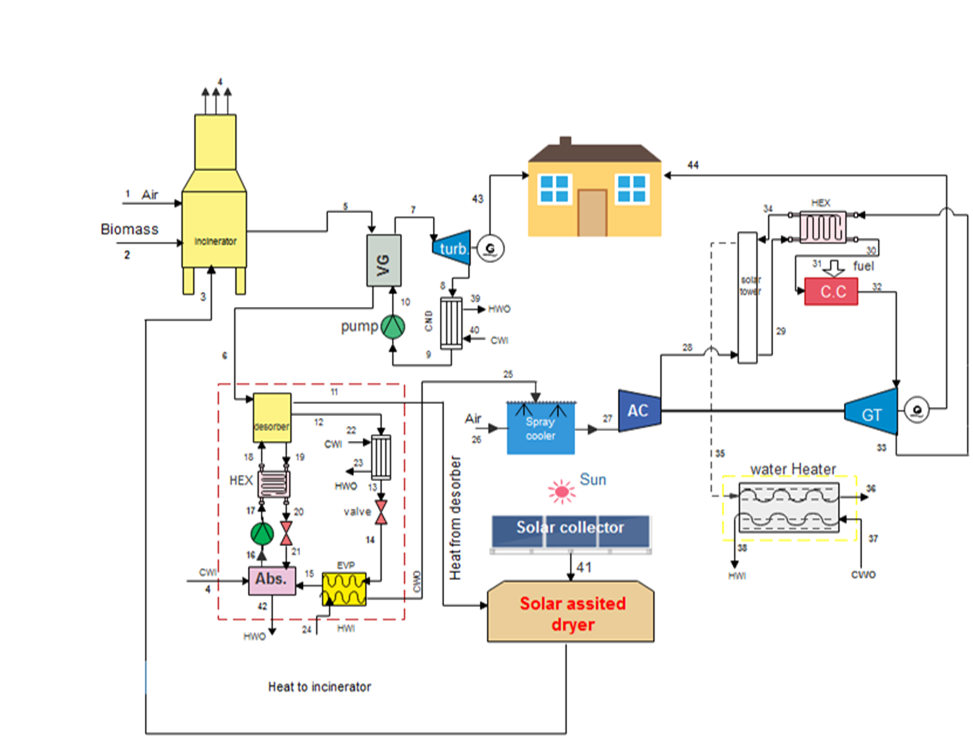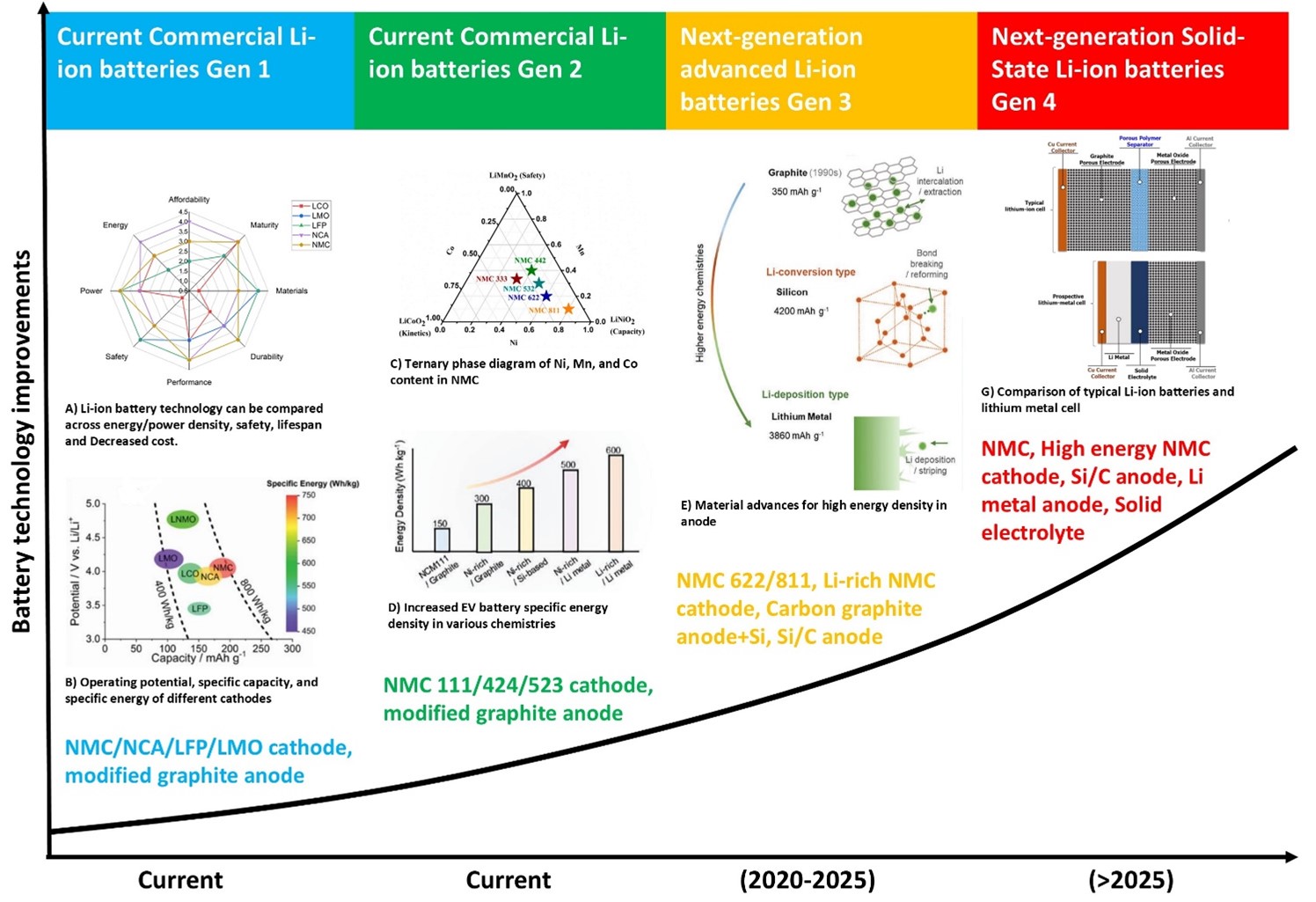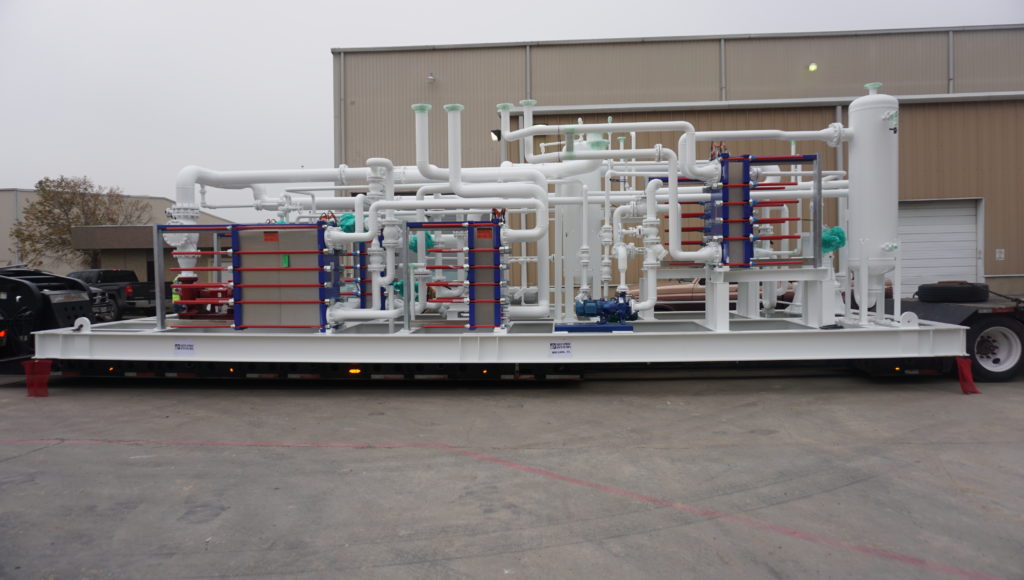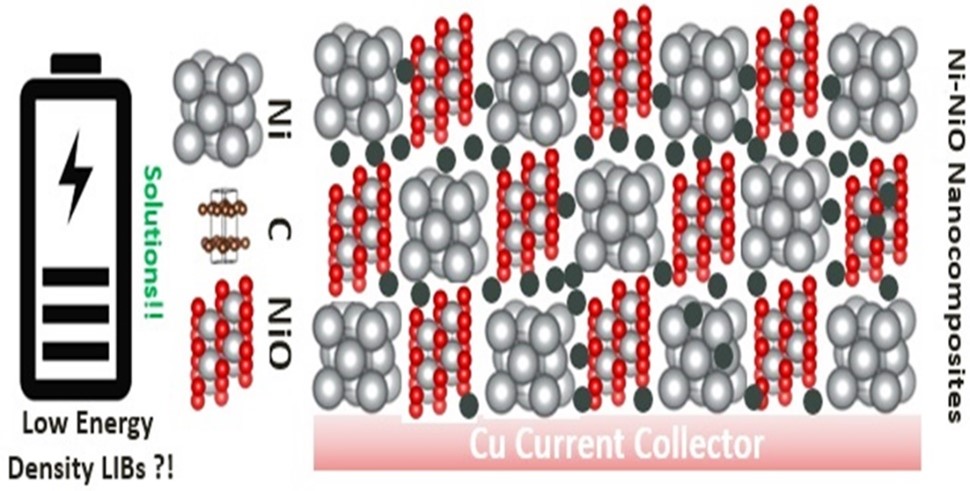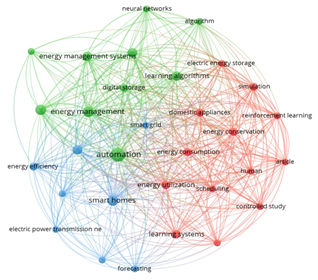Design and analyzing a hybrid hydro and solar photovoltaic system for rural areas in Malaysia
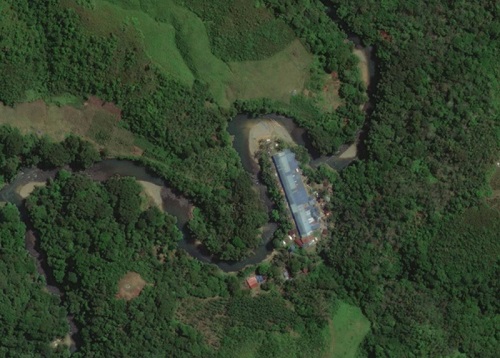
Downloads
Some rural areas worldwide, including Malaysia, are not electrified due to geographical constraints, less infrastructure development, and isolation from the main power grid. In addition, renewable energy (RE) sources are considered alternatives to replace conventional (non-RE) sources that cause pollution. However, RE sources have limitations, such as the dependency of weather and geological conditions. To address this issue, a hybrid renewable energy system (HRES) is introduced by connecting one RE and non-RE source or more than one RE with or without non-RE sources. In this study, a stand-alone hybrid hydro and solar photovoltaic (PV) HRES was designed for Rumah Bada in Nanga Talong, Ulu Engkari. As the site has limited information on load consumption and geographical data, estimations were done based on similar studies. The available solar PV and hydro system at the site was identified with the respective parameters. The proposed system was based on the hybrid AC-DC microgrid, along with two alternatives based on the AC and DC microgrid, respectively. Technical analysis was done to determine the capability of the system by calculating the power generated during different periods and performing the load flow analysis using the PowerWorld Simulator. Apart from that, economic analysis was done to find out the most cost-efficient system by calculating the net present cost (NPC) and cost of energy (COE) using HOMER Pro.
P. Bajpai, and V. Dash, "Hybrid Renewable Energy Systems for Power Generation in Stand-alone Applications: A Review", in Renewable and Sustainable Energy Reviews, vol. 16, no. 5, 2012, pp. 2926 – 2939.
Sustainable Energy Development Authority (SEDA) Malaysia, "Renewables in Malaysia", in Malaysia Renewable Energy Roadmap: Pathway Towards Low Carbon Energy System, 2021, pp. 34 – 53.
Economic Planning Unit, Prime Minister's Department, "Chapter 6: Improving Regional Balance and Inclusion", in Twelfth Malaysia Plan, 2021 – 2025: A Prosperous, Inclusive, Sustainable Malaysia, 2021, pp. 6-1 - 6-23.
Economic Planning Unit, Prime Minister's Department, "Chapter 9: Enhancing Energy Sustainability and Transforming the Water Sector", in Twelfth Malaysia Plan, 2021 – 2025: A Prosperous, Inclusive, Sustainable Malaysia, 2021, pp. 9-1 - 9-23.
M. F. Akorede, "Design and Performance Analysis of Off-grid Hybrid Renewable Energy Systems", in Hybrid Technologies for Power Generation, M. Lo Faro, O. Barbera, and G. Giacoppo, Eds. 2022, pp. 35 – 68.
O. Capraz, A. Gungor, O. Mutlu, and A. Sagbas, "Optimal Sizing of Grid-connected Hybrid Renewable Energy Systems Without Storage: A Generalised Optimisation Model", in Energy Sources, Part A: Recovery, Utilisation, and Environmental Effects, 2020, pp. 1 – 34.
Yonis.M. Yonis Buswig, Azuka Affam, Al-Khalid Hj bin Othman, Norhuzaimin bin Julai, Y. S. Sim, and W. M. Utomo, "Sizing of a Hybrid Photovoltaic-Hydrokinetic Turbine Renewable Energy System in East Malaysia", in 2020 13th International UNIMAS Engineering Conference (EnCon), Kota Samarahan, Sarawak, Malaysia, October 27-28, 2020, pp. 1 – 8.
J. O. Oladigbolu, M. A. M. Ramli, and Y.A. Al-Turki, "Optimal Design of a Hybrid PV Solar/Micro-Hydro/Diesel/Battery Energy System for a Remote Rural Village under Tropical Climate Conditions", in Electronics, vol. 9, no. 9, 2020, pp. 1 – 22.
Muaz Izzuddeen Sabudin, Mohd Noor Syawal Mustapha, Muhammad Adzim Mohd Rozi and Devaraj Tharuma Rajah, “Design of Hybrid Renewable Energy Systems for a Village in Selangor, Malaysia”, in Malaysian Journal of Science and Advanced Technology, vol. 1, no. 1, 2021, pp. 1 – 5.
R. Syahputra, and I. Soesanti, "Renewable Energy Systems Based on Micro-Hydro and Solar Photovoltaic for Rural Areas: A Case Study in Yogyakarta, Indonesia", in Energy Reports, vol. 7, 2021, pp. 472 – 490.
Y. T. Shah, "Simulation and Optimisation of Hybrid Renewable Energy Systems", in Hybrid Power: Generation, Storage, and Grids, CRC Press, Taylors & Francis Group, 2021, pp. 535 – 603.
Syafaruddin and S. Latief, 'Lesson Learned from Power System Design with PowerWorld Simulator', in 2018 Conference on Power Engineering and Renewable Energy (ICPERE), Solo, Indonesia, October 29 – 31, 2018, pp. 1 – 6.
A. Cagnano, E. De Tuglie, and P. Mancarella, "Microgrids: Overview and Guidelines for Practical Implementations and Operation", in Applied Energy, J. Wu, and Z. A. Vale, Eds. vol. 258, 2020, pp. 1 – 18.
R. Shirley, and D. M. Kammen, "Rural Sustainable Energy Supply Potential: A Case Study of the Baram River Basin, Sarawak, Malaysia", in Kampung Clean Energy Capacity, 2013, pp. 1 – 32.
S. E. Chong, C. K. Gan, A. S. Y. Chin, Christopher Wesley Ajan, J. Bealt, D. Shaw, and Syed Mohamad Fauzi Shahab, "Electricity Consumption of Remote Villages in Sarawak Powered by Off-grid Solar System", in 2020 International Conference on Smart Grids and Energy Systems (SGES), Perth, Australia, November 23 – 26, 2020, pp. 633 – 638.
D. Zhang, and A. Allagui, "Fundamentals and Performance of Solar Photovoltaic Systems", in Design and Performance Optimisation of Renewable Energy Systems, Mamdouh El Haj Assad and M. A. Rosen, Eds. 2021, pp. 117 – 129.
A. Kuanar, B. Panda, and D. Behera, "Comparison of Simulation Tools for Load Flow Analysis", 2021 1st International Conference on Power Electronics and Energy, January 2 – 3, 2021, Bhubaneswar, India, pp. 1 – 5. [24] Drake SJ, Martin M, Wetz DA, Ostanek JK, Miller SP, Heinzel JM, et al. Heat generation rate measurement in a Li-ion cell at large C-rates through temperature and heat flux measurements. J Power Sources 2015;285:266–73. https://doi.org/10.1016/j.jpowsour.2015.03.008.
Kwiecien M. Electrochemical Impedance Spectroscopy on Lead-Acid Cells during Aging 2019:1–14.
Rahman MA, Rahman MM, Song G. A review on binder-free NiO-Ni foam as anode of high performance lithium-ion batteries. Energy Storage 2022;4:1–24. https://doi.org/10.1002/est2.278.
Siddiqui SET, Rahman MA, Kim JH, Sharif S Bin, Paul S. A Review on Recent Advancements of Ni-NiO Nanocomposite as an Anode for High-Performance Lithium-Ion Battery. Nanomaterials 2022;12:1–33. https://doi.org/10.3390/nano12172930.
Porous anode materials for high performance lithium ‐ ion batteries 2016.
Rahman MA, Song G, Bhatt AI, Wong YC, Wen C. Nanostructured silicon anodes for high-performance lithium-ion batteries. Adv Funct Mater 2016;26:647–78. https://doi.org/10.1002/adfm.201502959.
Rahman MA, Wang X, Wen C. High Energy Density Metal-Air Batteries: A Review. J Electrochem Soc 2013;160:A1759–71. https://doi.org/10.1149/2.062310jes.
Rahman MA, Wen C. A study of the capacity fade of porous NiO/Ni foam as negative electrode for lithium-ion batteries. Ionics (Kiel) 2016;22:173–84. https://doi.org/10.1007/s11581-015-1542-8.
Rahman MA, Wen C. Nanogravel structured NiO/Ni foam as electrode for high-performance lithium-ion batteries. Ionics (Kiel) 2015;21:2709–23. https://doi.org/10.1007/s11581-015-1475-2.
Horstmann B, Single F, Latz A. Review on multi-scale models of solid-electrolyte interphase formation. Curr Opin Electrochem 2019;13:61–9. https://doi.org/10.1016/j.coelec.2018.10.013.











